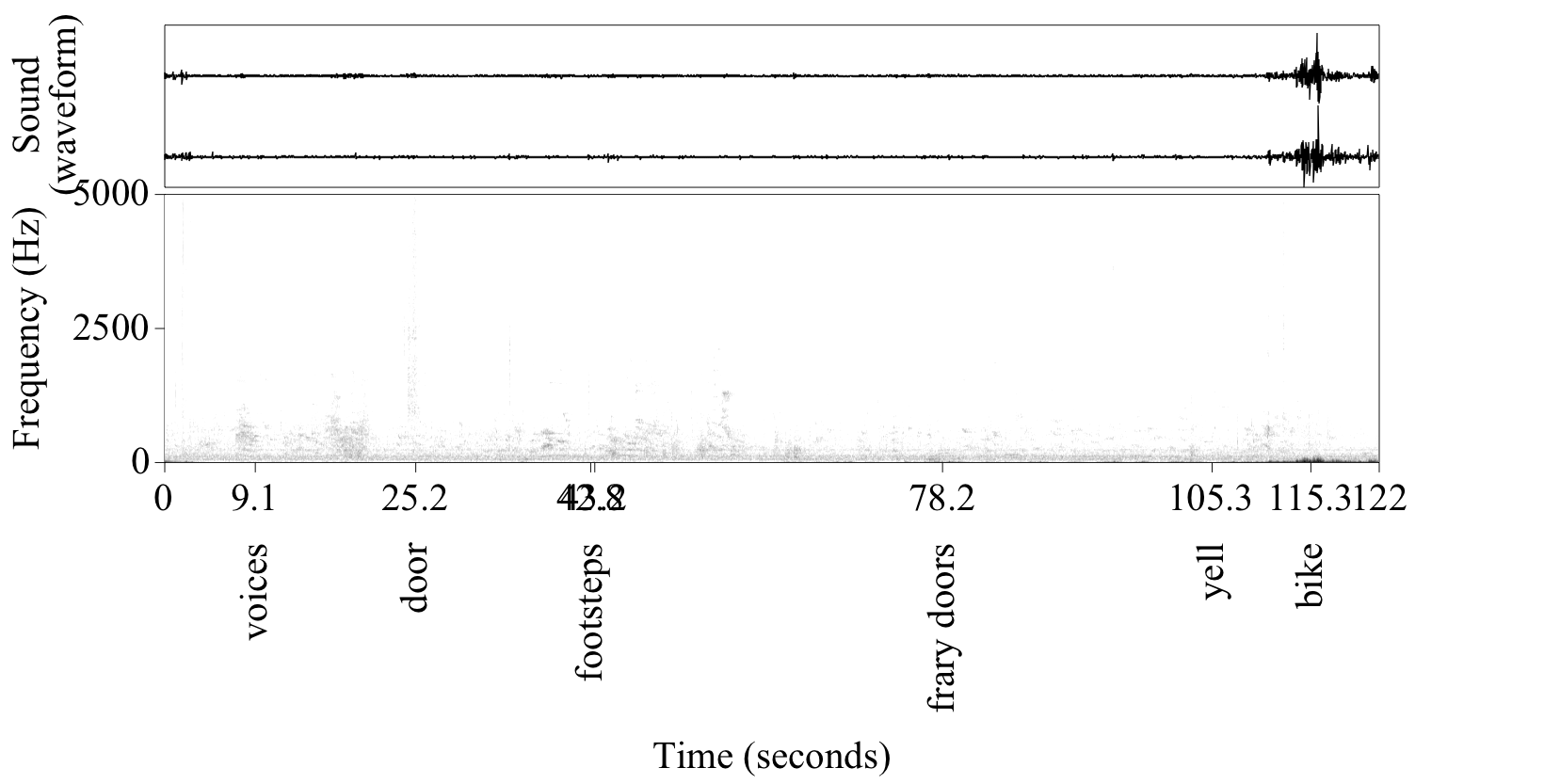
Loading map...

I chose to examine the soundscape of the open courtyard right outside of the main entrance of Frary dining hall during the Pomona “snack” time. I thought that studying this specific moment and place would be fascinating because the area suddenly comes alive with sound, along with movement and energy, at around 9:55 p.m. as students come out of their study sessions to eat food together. Another interesting component of this soundscape is that it only replicates itself about 4 times a week during the school year.
A couple of keynotes anchor the soundscape outside of Frary.[1]The fountain is the sound that I first identified. Naturally drawn to the sound of moving water, I found this sound very constant and comforting. It adds a tranquil bottom layer to the atmosphere of the open square, and it is fundamental to the acoustic design of the area. The next keynote I identified was the sound of bugs. Claremont hosts many crickets and wildlife that emit their songs out into the soundscape during nighttime. Their sounds evaporate into our subconscious, but they are present and help to define the soundscape.
Sporadically, different types of signals enter and exit the soundscape naturally.[2]Because this area is central to many dorms and other buildings, the sounds of doors opening, closing, and creaking are very noticeable to any person in the area. Of course, human voices also are pretty consistent signals in the soundscape, and the voices and words are always changing. The entrance to Frary dining hall is designed as an echo chamber, and because of that, the texture of voices from inside of the arch is more resonant than the texture of voices in the open courtyard. In a way, these voices may also compose a soundmark for this area.[3]
I found that the overall volume level for this soundscape rose and fell from around 9:55p.m. to 10:30p.m. Afterwards, the soundscape was stripped of most of the voices and doors.
[1]The term “keynote” is introduced in R. Murray Schafer’s piece, “Soundscapes and Earwitnesses,” reprinted in Hearing History: A Reader, ed. Mark M. Smith (Athens: University of Georgia Press, 2004), 100-101. Keynote sounds are the fundamental tones of a soundscape that are created by the geography and climate.
[2]The term “signal” is introduced in R. Murray Schafer’s piece, “Soundscapes and Earwitnesses,” reprinted in Hearing History: A Reader, ed. Mark M. Smith (Athens: University of Georgia Press, 2004), 100-101. Signals are foreground sounds in a soundscape that are often consciously heard by observers.
[3]The term “soundmark” is introduced in R. Murray Schafer’s piece, “Soundscapes and Earwitnesses,” reprinted in Hearing History: A Reader, ed. Mark M. Smith (Athens: University of Georgia Press, 2004), 100-101. A soundmark is a community sound that is relevant to that specific place and time.